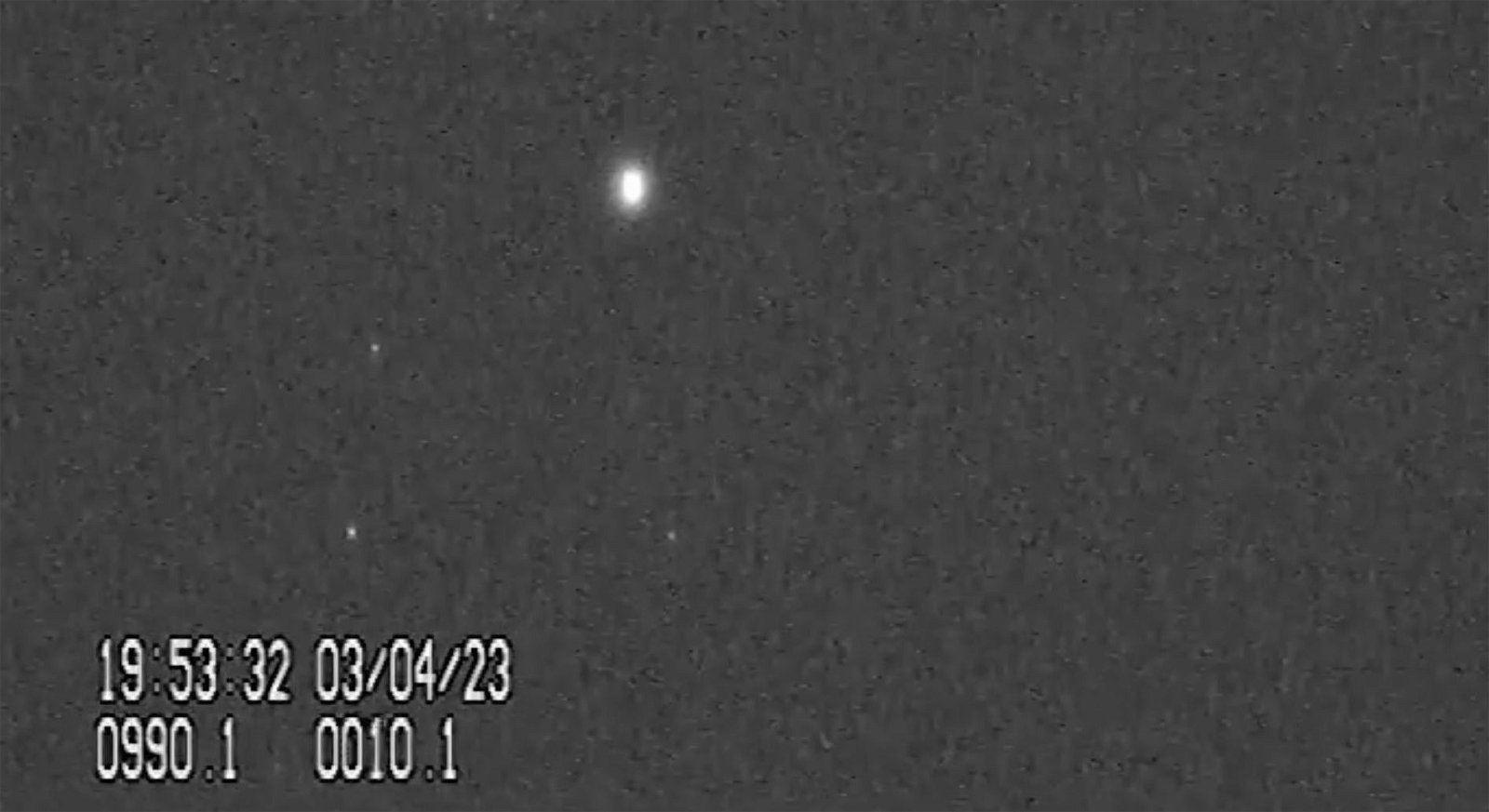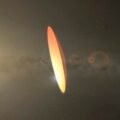Have you seen an unusually bright object moving through the evening sky recently?
Chances are that it wasn’t one of the mysterious objects that the DoD and NASA are currently studying, but was instead one of the growing number of manmade spacecraft taking up residence in Earth’s orbit.
And this one has astronomers particularly concerned.
BlueWalker 3 is a satellite that was launched into low-Earth orbit last November, and since reaching orbit, the spacecraft has unveiled an almost 700-square-foot array that reflects enough light to make it one of the brightest objects that can be seen in the night sky.
Brighter than most celestial and manmade objects that can be seen on clear nights, BlueWalker 3 is one of several new satellites currently being developed by AST SpaceMobile, builders of a space-based broadband network that will allow smartphones, without any need for modifications, to connect to satellite-based mobile services in areas where ground-based coverage gaps occur.
According to the authors of a new study published this week in Nature, extremely bright satellites like the ones AST SpaceMobile is building pose a significant problem for astronomers.
“Large constellations of bright artificial satellites in low Earth orbit (LEO) pose significant challenges to ground-based astronomy,” the paper’s authors write, emphasizing that constellation satellites that are currently in orbit generally have a brightness that falls between magnitudes 4 and 6 and can reach magnitude 2 in the near-infrared Ks-band.
BlueWalker 3, by comparison, produces an apparent magnitude of 0.4, making it not only significantly brighter than other satellites currently in orbit, but also placing it among the ten brightest objects visible in the night sky.
Even prior to the launch of BlueWalker 3, astronomers around the world have been engaged in mitigation strategies aimed at offsetting the potential that a growing number of bright spacecraft in Earth’s orbit will inevitably complicate the work of astronomers who rely on ground-based telescopes.
However, the luminosity produced by these objects as they reflect sunlight is only one of the challenges they present to astronomers. Some estimates indicate that radio emissions from satellite constellations may also potentially interfere with the operations of ground-based radio telescopes.
In their recent paper in Nature, the more than three dozen coauthors report the results of an international optical observation effort involving BlueWalker 3 and the light reflected by its 65.3 square-meter phased-array antenna and its Launch Vehicle Adapter (LVA).
“The peak brightness of the satellite reached an apparent magnitude of 0.4,” the authors write in their paper’s abstract, which they say “made the new satellite one of the brightest objects in the night sky.”
The authors also report that the satellite’s LVA alone managed to attain V-band magnitudes of 5.5, four times brighter than what the International Astronomical Union has recommended in the past.
Speaking with The Debrief in an email, Siegfried Eggl, one of the paper’s coauthors, said that the brightness of BlueWalker 3–greater than all but eight of the brightest stars in the sky–presents a significant issue for optical astronomy, particularly wide-field imaging conducted using large aperture telescopes.
“Such instruments usually avoid bright stars in the sky as they saturate or even damage sensitive detectors. Having hundreds of BW3-like satellites in the sky would require active avoidance.”
“At best, this comes at a cost to those who fund astronomical research; in many cases taxpayers,” Eggl told The Debrief. “However, active avoidance, i.e., pointing the telescope away from such objects, is not always possible or economical.”
Eggl explained that this difficult arises from the fact that most satellite constellations must to maneuver on a near-permanent basis in order to avoid collisions with other satellites or space debris.
“Since it is not clear when that will happen, even the best orbit data is rather uncertain,” Eggl told The Debrief. “For telescope operators, this would mean one would have to shutter the detectors for much longer than would be necessary, just because we don’t know exactly when each satellite will pass the field of view.”
However, Eggl also said that there were at least some things about BlueWalker 3’s size that astronomers see as beneficial.
“On the other hand, BW3’s size allows it to better focus its radio emissions so that Radio Astronomy is a little less affected than if the satellite were smaller,” Eggl said.
The concerns the authors of the recent Nature paper have aired are not the first of their kind. In March, a similar paper featured in the journal, titled “A call for scientists to halt the spoiling of the night sky with artificial light and satellites,” similarly warned of the potentially negative impact a growing number of bright spacecraft in Earth’s orbit may have.
“Unfettered access to dark night skies is rapidly diminishing due to light pollution and satellite constellation tracks,” the authors of the March study warned. “Scientists should do more to stand up to ‘big light’ and ‘big space’ and preserve this natural resource.”
In July, researchers using the Low-Frequency Array (LOFAR) telescope in the Netherlands also reported the detection of “unintended electromagnetic radiation” from the electronics onboard Starlink satellites.
“Further scientific evaluation including other satellite systems is underway, as this unintended radiation could impact astronomical research,” read a statement issued by the IAU Centre for the Protection of the Dark and Quiet Sky from Satellite Constellation Interference (CPS) following the publication of a study based on their findings.
“The authors encourage satellite operators and regulators to consider this impact on radio astronomy in spacecraft development and regulatory processes alike,” the CPS statement added.
In the paper published in Nature this week, the authors further warn that “The expected build-out of constellations with hundreds of thousands of new, bright objects will make active satellite tracking and avoidance strategies a necessity for ground-based telescopes.”
For co-author Siegfried Eggl, objects that obstruct our view of the cosmos amount to more than just lost time, and could ultimately result in far deeper consequences.
“Every second in the sky that is lost is not only expensive, but it also prevents us from learning more about the universe,” Eggl told The Debrief, “or finding the next potentially hazardous asteroid.”
The recent paper by Sangeetha Nandakumar, Siegfried Eggl, Jeremy Tregloan-Reed, et al., “The high optical brightness of the BlueWalker 3 satellite,” was published on October 2, 2023.
Micah Hanks is the Editor-in-Chief and Co-Founder of The Debrief. He can be reached by email at micah@thedebrief.org. Follow his work at micahhanks.com and on Twitter: @MicahHanks.
This article was updated on Oct 4, 2023, to include additional quotes from Siegfried Eggl, one of the co-authors of the paper this article discusses.

